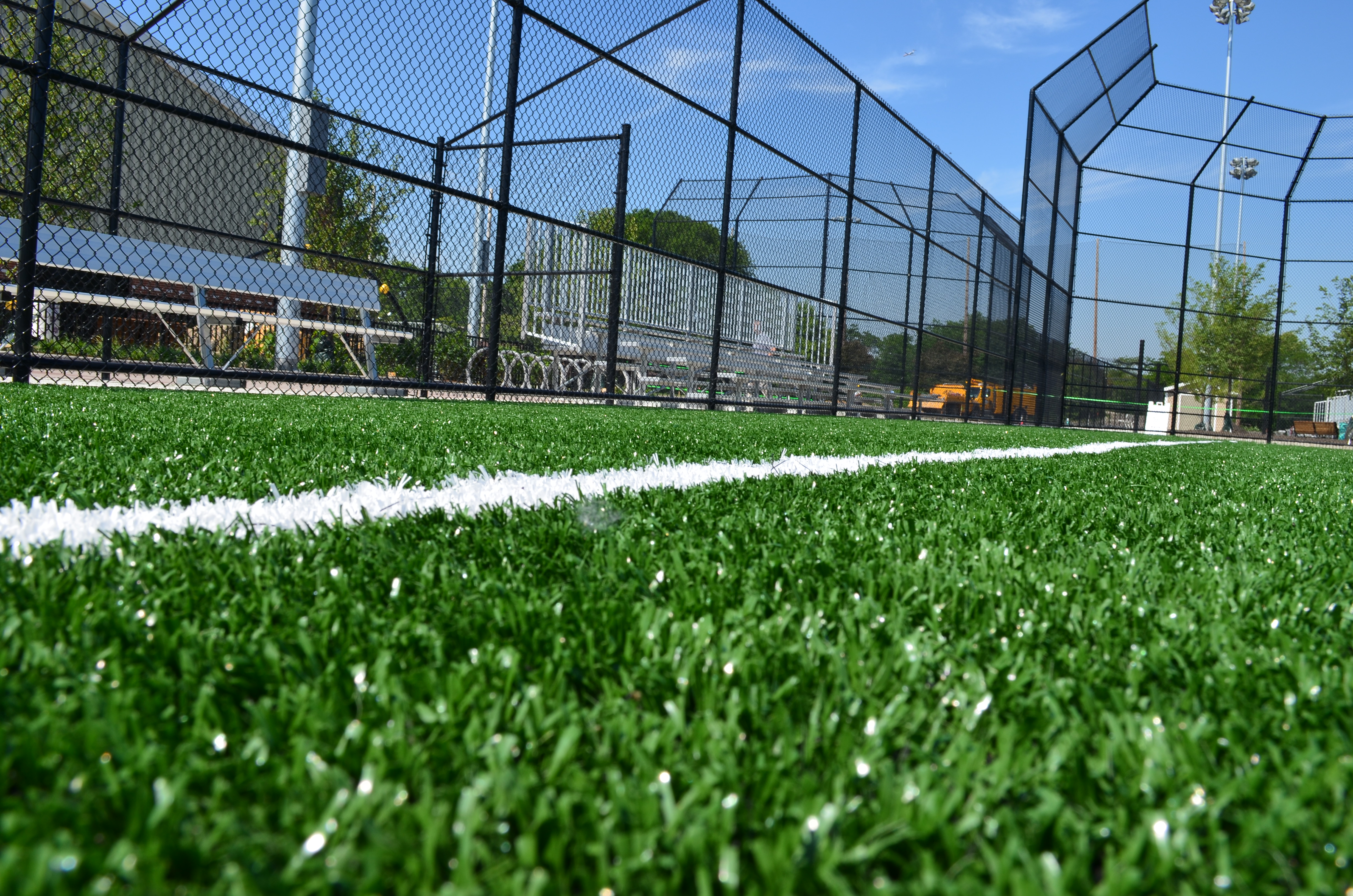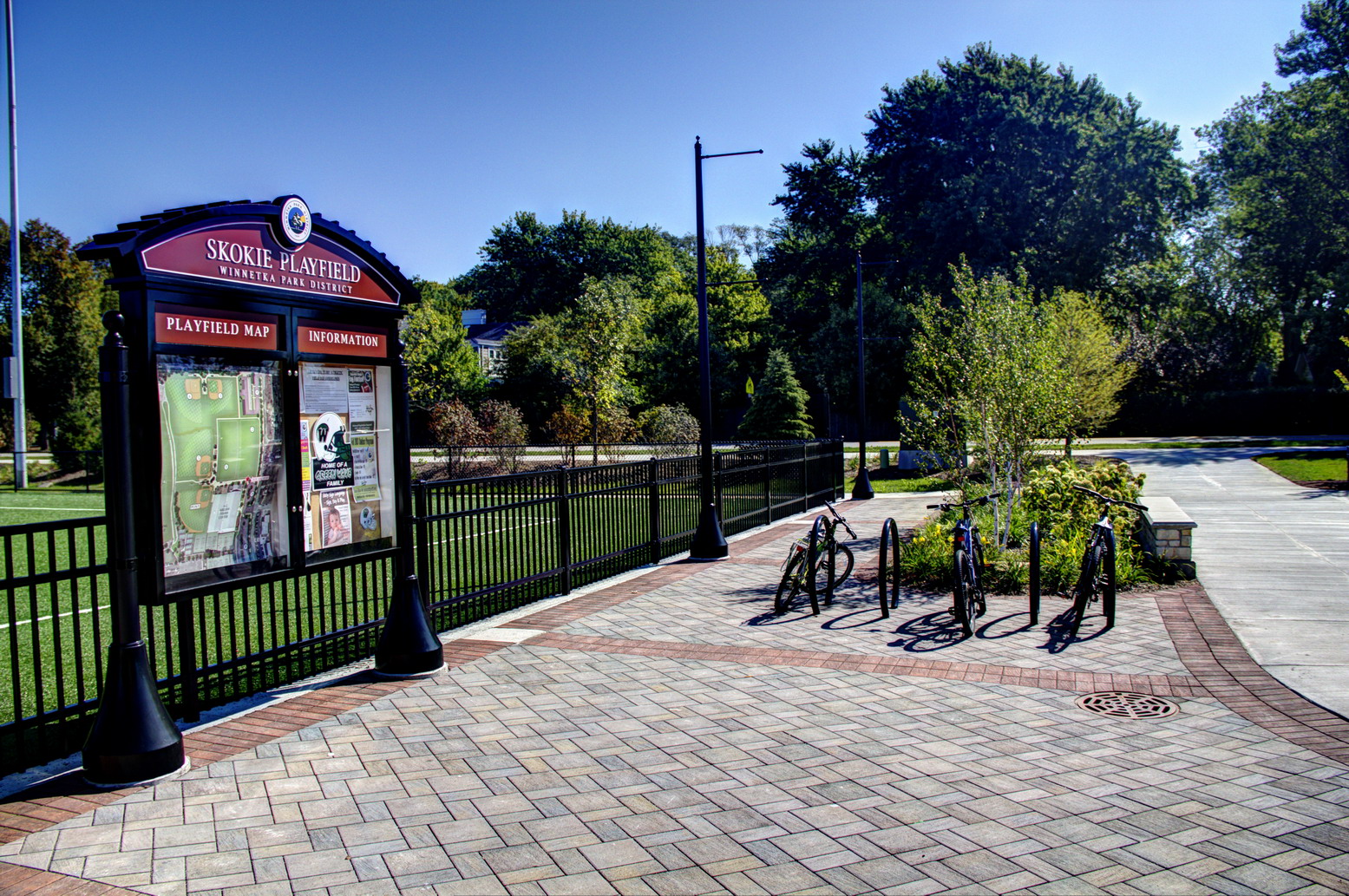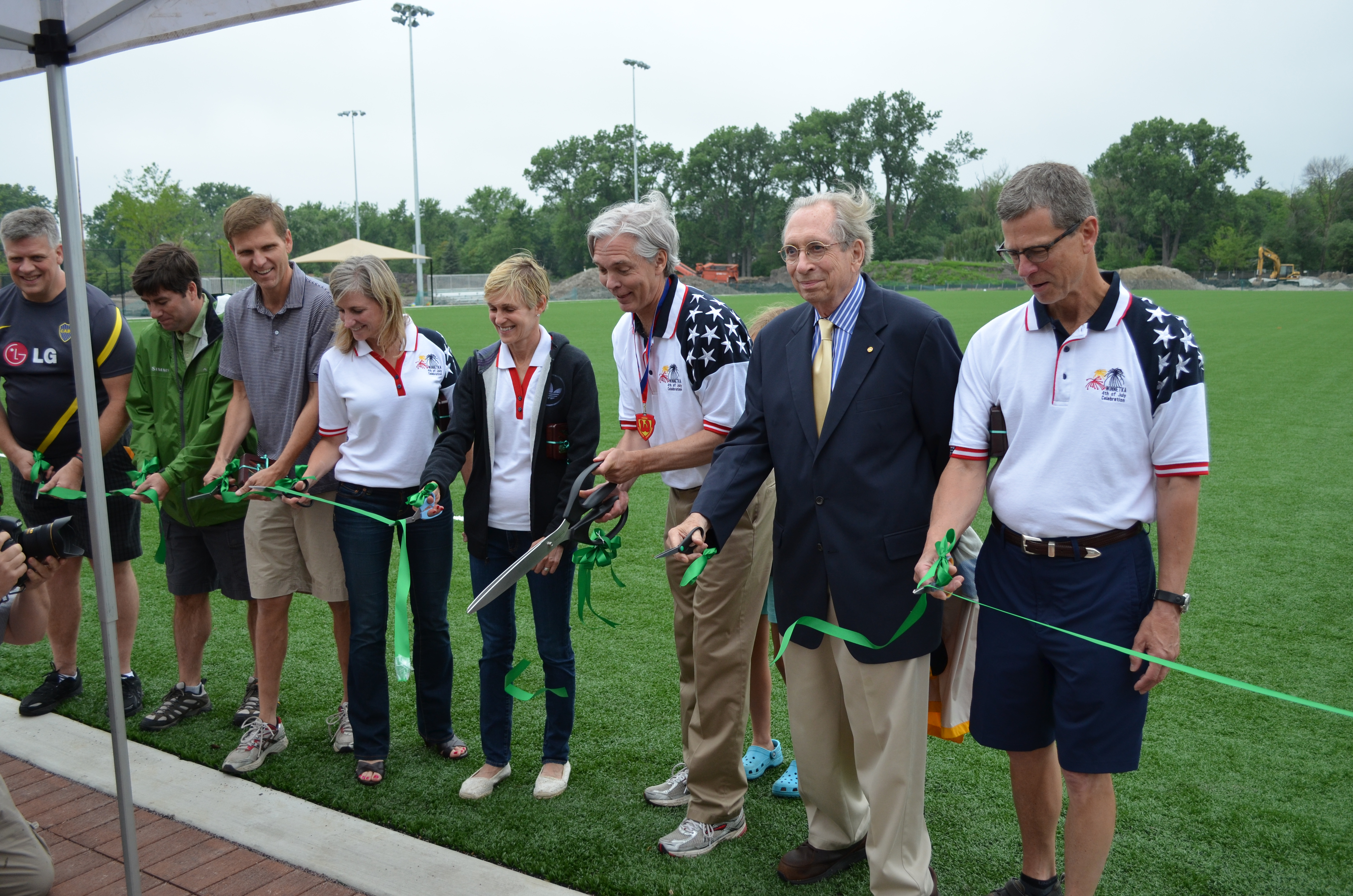By The Lakota Group | August 29, 2013
 A few weeks ago I attended the ribbon cutting for a project I worked on for the Winnetka Park District. The project was the first portion of a Master Plan enhancement to the Park District’s Skokie Playfield complex. It was very rewarding to see the project come to life as it had been a five year process, starting with a Master Planning program in 2008. Part of the reason the project took a longer than a typical timeline is because it was the Park District’s first foray into synthetic turf, and with this comes a certain amount of controversy, misinformation and evaluation of priorities.
A few weeks ago I attended the ribbon cutting for a project I worked on for the Winnetka Park District. The project was the first portion of a Master Plan enhancement to the Park District’s Skokie Playfield complex. It was very rewarding to see the project come to life as it had been a five year process, starting with a Master Planning program in 2008. Part of the reason the project took a longer than a typical timeline is because it was the Park District’s first foray into synthetic turf, and with this comes a certain amount of controversy, misinformation and evaluation of priorities.
Some of you may be familiar with the topic and the issues that come along with it. Others may be encountering these discussions in your own communities – in Oak Park, where I live, I recently read a passionate editorial in our local paper regarding the the concerns around a new synthetic field.
What I find fascinating about the discussions are the many different facets or angles to each of them:
- There are those whose only familiarity with synthetic turf is the “Astroturf” of old – which is reminiscent of mini-golf courses and 1970’s outdoor sunrooms – and would never want their child to be on the receiving end of a tackle on this kind of material.
- Some who have found a few online resources claiming that synthetic turf can create increased exposure to trace metals, semi-volatile organic compounds, bacteria, and greater likelihood of heat stress.
- Those who see synthetic turf as a further degradation of the precious remaining natural open spaces we have in our communities.
 As with many hot button issues these days, the merits of synthetic turf can be debated with disregard for facts, or muddied up by conflicting studies or outdated information made available and easily procured through the glory of the internet.
As with many hot button issues these days, the merits of synthetic turf can be debated with disregard for facts, or muddied up by conflicting studies or outdated information made available and easily procured through the glory of the internet.
What I can tell you is that more and more communities are finding themselves in the position where the demand of field time exceeds what can be provided on existing natural turf fields without overtaxing them. This is what was happening in Winnetka. The turf fields they were using could not keep up with demand. Additionally, there are no opportunities within the community to create additional fields. Other “land-locked” communities are struggling with the same issues. Synthetic fields create an opportunity to get more use and program more activities within the same space, while reducing maintenance and “restoration costs.”
In a time of rising obesity and related health concerns, it seems a positive thing to create opportunities for more people to play sports. Although, I am somewhat conflicted, as I do subscribe to the “No Child Left Inside” movement popularized by Richard Louv, which encourages reconnecting with nature through non-structured time. Then again, the argument could be made for using synthetic turf fields to reduce the overall quantity of athletic fields, leading to more naturalized areas and passive open spaces.
I am similarly conflicted when it comes to the artificial character of synthetic turf. There is no denying it – it is made out of plastic and rubber. However, I don’t feel strongly in support of turf fields that can take significant maintenance, watering, herbicides and fertilizers to keep in top form. (On a side note, I am experimenting with a “more sustainable” turf in my yard right now and plan on sharing the results in another blog post in fall).
With the sensitivities of this topic, I do feel like Lakota was successful in partnering with the Park District and our team civil engineer, Gewalt Hamilton Associates , to help the community navigate and gain consensus on a decision. In this case, the decision was to create a large multi-purpose synthetic field, while enhancing several of their other turf fields. Additionally, the synthetic field was used as an opportunity to collect and store stormwater underneath in a large series of chambers, creating benefits for the overall park and adjacent properties during storm events.
Other communities may come to a different conclusion, which there is nothing wrong with. Just as long as it is reached through a process that engages the community and addresses the real issues and trade-offs with a positive dialogue.
